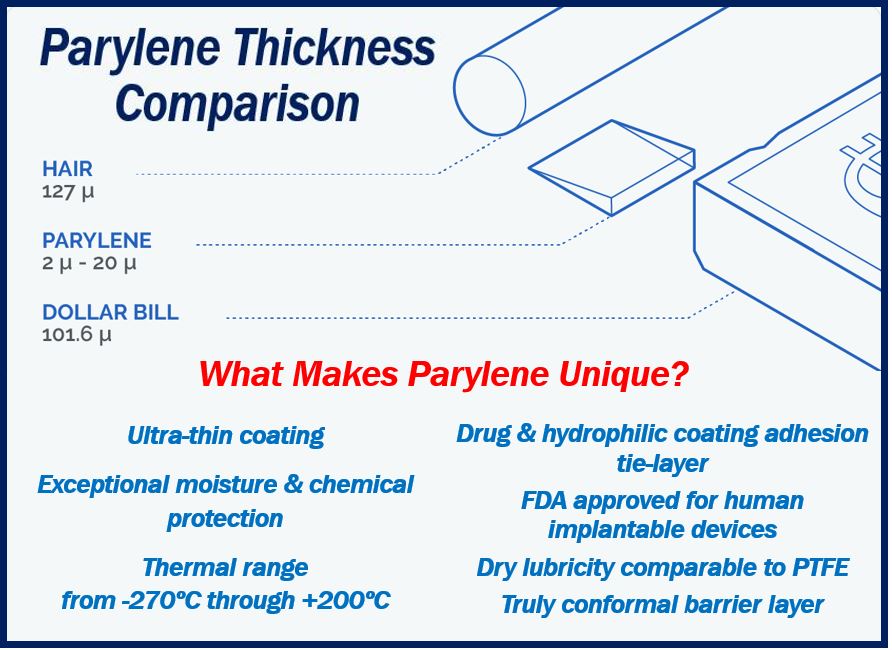Parylene has become popular when it comes to choosing a protective coating for electronics, aerospace, and medical applications. It has been used for decades to coat aviation and aerospace that is made for military purposes, as it forms a film that protects the surface and helps it resist contaminants, moisture, petro chemicals, corrosives, gases, acids, and alkalis.
 Parylene is different from most common conformal coatings as they are naturally in liquid form. Parylene doesn’t go through a liquid stage when it is formed on surfaces, instead, it is deposited as a vapor created from a powder known as a dimer.
Parylene is different from most common conformal coatings as they are naturally in liquid form. Parylene doesn’t go through a liquid stage when it is formed on surfaces, instead, it is deposited as a vapor created from a powder known as a dimer.
History of Parylene
A research chemist in the late 1940s discovered the parylene polymer series at the University of Manchester in England. The product was later commercialized when William Gorham, a Union Carbide Corporation scientist, began applying the film on objects.
The many uses of Parylene
Parylene coating offers durability, adhesion, and flexibility that make it the easy choice to layer products.
- Automotive applications: Parylene is used to protect engines from environments that could cause it to break such as humidity.
- Medical devices: Parylene coating is used for the implantable of medical devices as well as the external. Some of the medical devices covered with parylene are cardiac-assist devices, cochlear devices, dermal drug deliver devices, intravascular ultrasound, medical nanotechnology, needles and syringes, ocular devices, pacemakers, sensors, transducers, and health-monitoring devices.
- Aerospace and military uses: Parylene coating provides durable layers of protection that are ultra-fine Equipment such as radar, detection, satellite electronics, and manned spaceflight.
Advantages of Parylene
Parylene is the preferred method to coat material as it is applied as a vapor and that allows it to cover the entire surface completely. Different materials such as plastics, ceramics, metals, and fabric allow parylene to coat them.
Parylene is especially favored when it comes to electronics, as it comes with pieces that are extremely small. When parylene is applied it is found to be thinner than human hair or a dollar bill.
How is parylene different?
Parylene offers a variety of coating types that are reliable, durable, long-lasting and is applied with a clear, thin, pinhole-free layer. It can also be applied as a thick layer and to cover every kind of shape and area.
Parylene is applied in a unique way through chemical vapor that covers the most difficult areas. It is lightweight, flexible when it comes to thickness, and doesn’t make any changes on the surface of products.
Parylene has different types that are created for every kind of material or shape. Parylene N does not change in frequency and has high dielectric strength and constant. Another kind of parylene is Parylene C, which offers low permeability to corrosive gas, chemicals, and moisture.
It can also survive in the highest temperature and other conditions that can cause damage such as chemicals and moisture. Its ability to stay strong and durable during such conditions makes it a favorite to use as a protective layer for everything that is big and small.
Interesting related article: “Coating graphene with wax during the manufacturing process.”

